Oxfordshire Mind’s Physical Activity team are offering a weekly ‘virtual walk’ this week the team are visiting an African Savanna:
Thanks for joining me today on our sunrise walk through the South African savanna. I know it was an early start for all of us- we’d have had to tumble out of our beds at about five o’clock this morning in order to get here on time. But this really is the best time to see all the beauty that this spectacular landscape has to offer; the beautiful scenery ,the breathtaking views—and, of course, the wildlife.
The thing about going out on a game walk like this is you just don’t know what you will find. The animals keep to their own schedules, and they don’t really care that we’ve come all this way to see them. I can’t promise anything. But if we keep our eyes peeled and stay very, very quiet, we could just stumble across something magical.
So follow me into the bush now and let’s see what we can see. Stay close behind me and don’t stray away from the group. Oh, and don’t worry about the lions. They’re sleeping at this time of day. Probably.
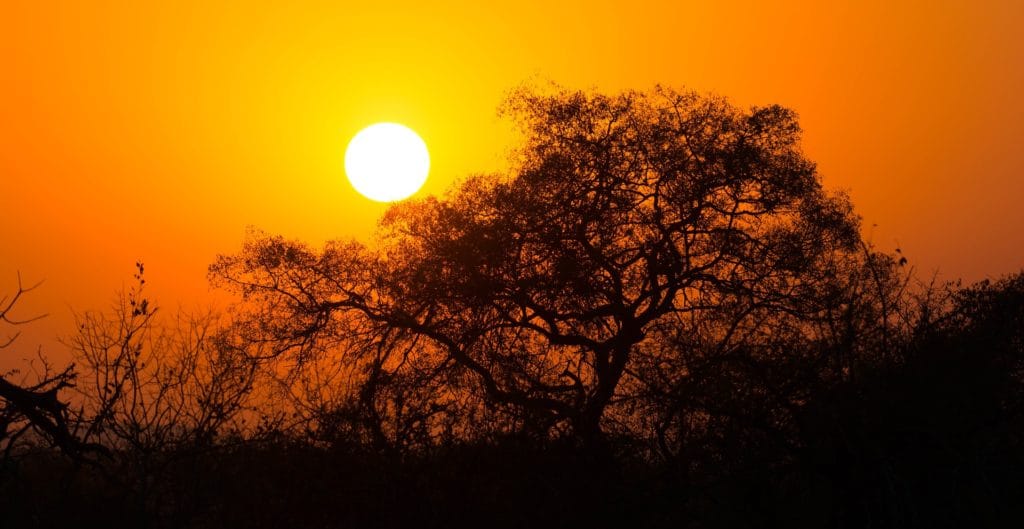
It’s still quite dark at the moment, which makes you all the more aware of the noises of the savanna around us. Sound travels across these open plains. Let’s stop for a moment and take it all in. The twittering of the birds, the croaking of the frogs and toads, the rustling of creatures moving through the long grass– punctuated every so often by the occasional snort or roar or whimper, far off in the distance. Loudest of all are the insects. The chirping of the crickets and the buzz of the cicadas blends together into a pulsing, hypnotic melody, like a natural symphony. If you live here a while, you get used to falling asleep to that soothing refrain, the lullaby of the African bush.
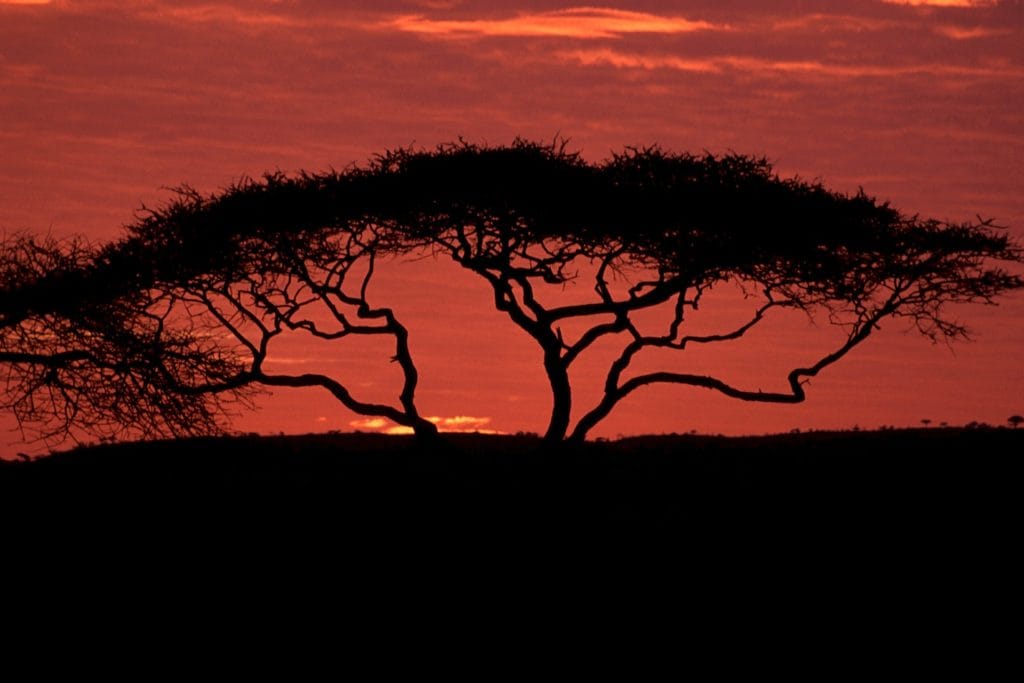
What are these trees we’re passing now, you ask? They’re acacias. It’s foolish to reduce an entire continent to a single symbol, of course, but they’re the trees that you think of when you think of Africa, the ones you see silhouetted against the sunset in every photograph, with their majestic spreading branches. Watch out, though – they’ve got wicked thorns, as long as your finger, and they really hurt if you step on one. They have those to protect against the giraffes, which would greedily gobble up all their leaves if they could.
Other ways that the acacias protect themselves against hungry grazers are even more ingenious. When their thorny defences are breached, the trees emit a chemical that makes their leaves taste bitter and forces the animal to move on. The incredible thing is, the tree then emits another chemical as an ‘alarm signal’, which is picked up by other trees downwind of the first tree. Those trees then do the same thing and make all their leaves taste bitter, too. So one tree saves all its neighbours. Isn’t that so cool? The things that nature comes up with, the clever strategies it adopts in order to survive.
Stop! Can you hear that grunting, squealing noise? If we wait here just a second, I think we might see something. Just as I thought. A warthog runs across our path, only a couple of metres ahead of us, followed by its little baby. And another, and another. And three- no, four- more! Seven little warthogs! It’s quite a family. Look how they run all in a line like that, with their tails pointed straight up in the air. Something about warthogs is just so funny. You can’t help but smile at the sight of them.
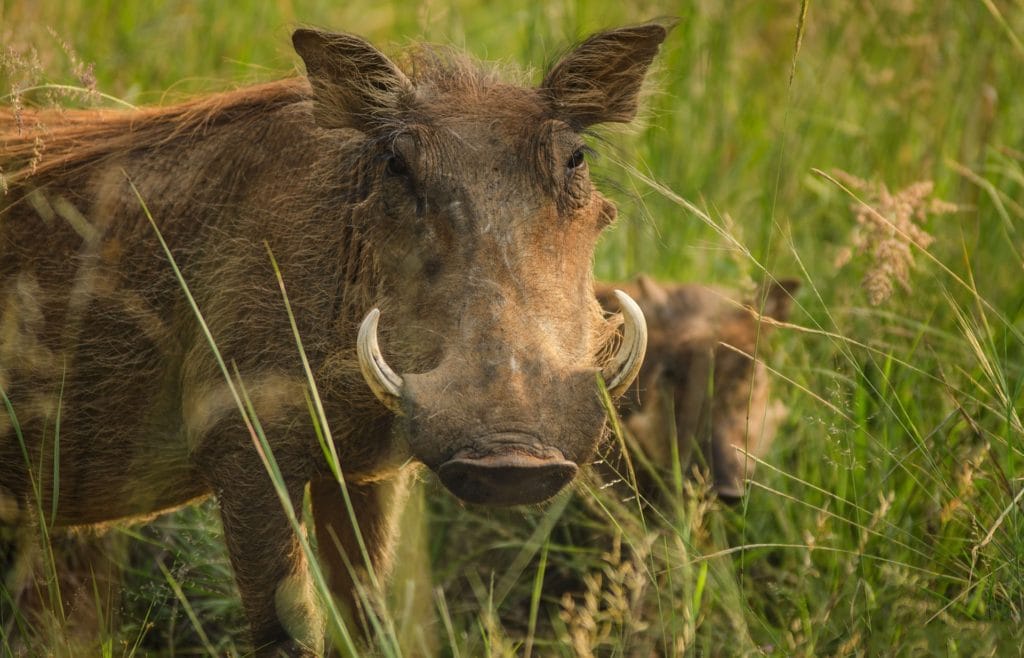
The sun’s just starting to rise above the treeline now. Look at that. There is nothing like a South African sunrise. The horizons are wider, the colours more vivid, somehow. The light blazes across the morning sky like a bushfire through dry grass, and the sun is ball of pure, fiery energy, radiating raw heat like a hot coal sizzling on the horizon.

To really get the most out of a game walk, you have to stay aware of your surroundings at all times, and always be looking out for clues that the animals leave you. Like those prints on the ground in front of you- you would have walked right past them if I hadn’t pointed them out, wouldn’t you? Those were made by a rhino, and they’re pretty fresh. It looks like she came this way earlier this morning. Can’t you just picture her now, making her slow, lumbering way between the bushes, occasionally stopping to browse on some leaves? She’s in no hurry, taking her time. Perhaps we’ll catch up to her later on.
Oh, look- do you see that giraffe’s head popping up over the trees, munching on some leaves? Here, come and look where I’m pointing. Didn’t I tell you they loved the acacias? Giraffes are such bizarre-looking animals, when you think about it. The Europeans called them camel-leopards when they first saw them, because they look a bit like a camel and have spots like a leopard. Imagine the shock of seeing something like that for the first time, when you had no idea it existed before. It must have been like coming face to face with a creature from another planet.
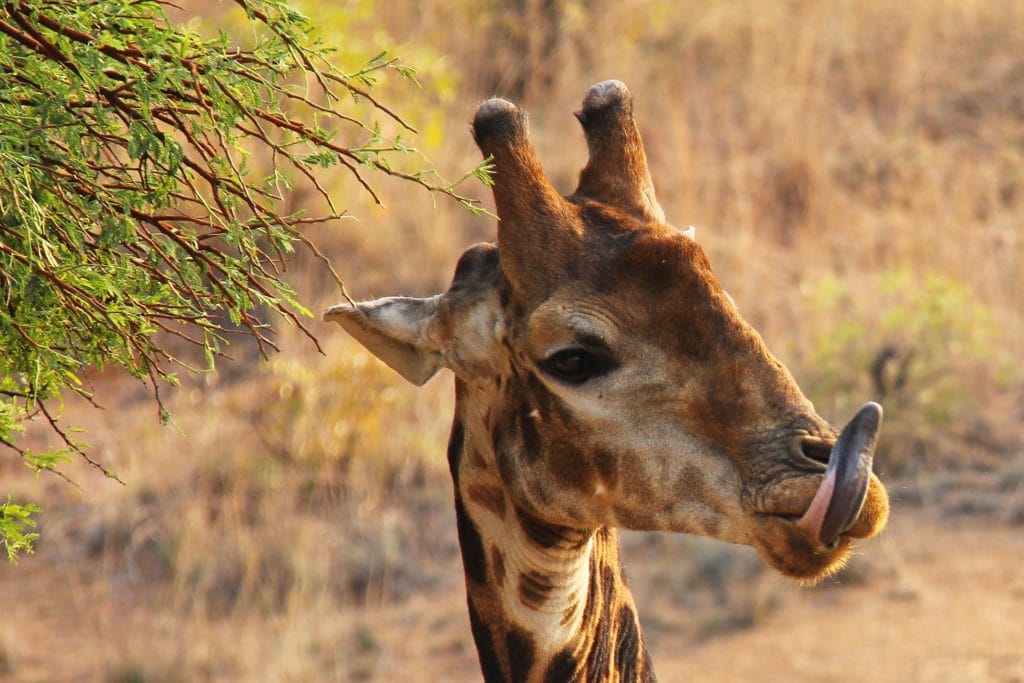
Soon we’re going to come out at a watering hole. Shh! There’s a good chance we’ll see something here, and we don’t want to disturb them. If we position ourselves behind this bush here, we should get a good view while keeping out of sight.
We’re in luck! A herd of elephants have stopped on the opposite bank for a drink and a swim. Look at that little baby, running around its mother’s legs, splashing and squirting water everywhere with its trunk. It’s adorable. It’s such a privilege to see the animals like this, just being themselves in their natural environment, when they don’t even know we’re here.
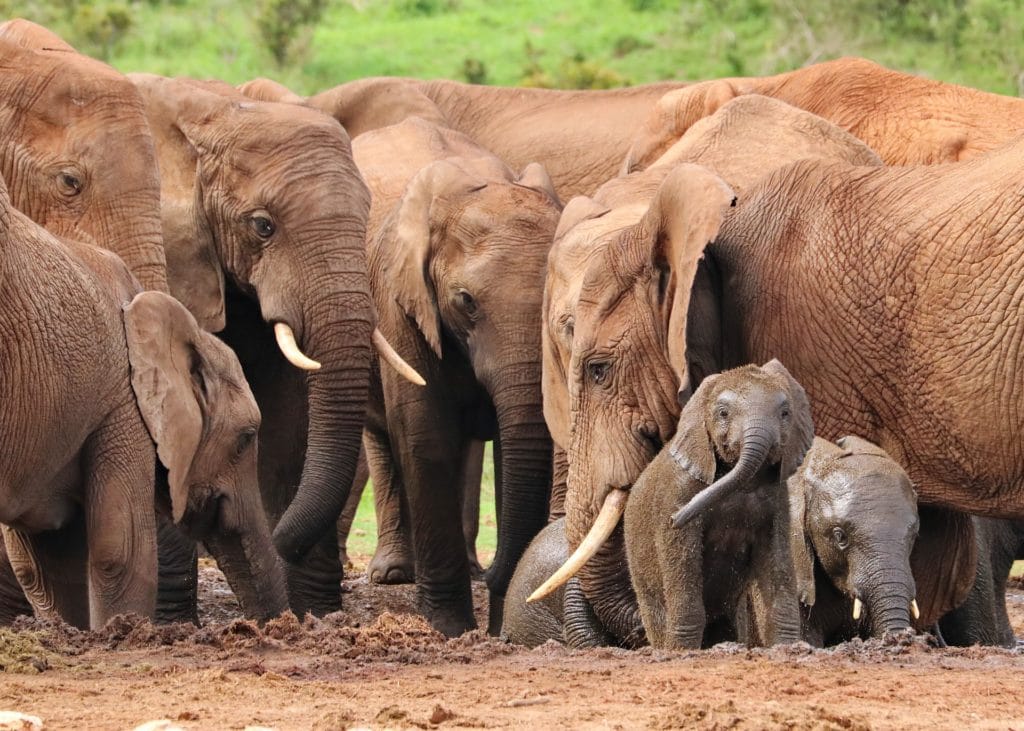
Keep well away from the water’s edge as we make our way the other end of the water hole. The hippos are the rulers here- see them there, half-submerged beneath the water, so you can just see their eyes and the tops of their heads? Careful, now. They may look peaceful, lazing around in the shallows, barely moving apart from the occasional flick of their ear to swat away a fly. But don’t be fooled. Hippos are actually one of the most dangerous animals you can meet. Inside those huge mouths are some pretty deadly teeth, and they’ve got a temper to match them. Let’s move on quickly and keep our distance. We wouldn’t want to provoke them.
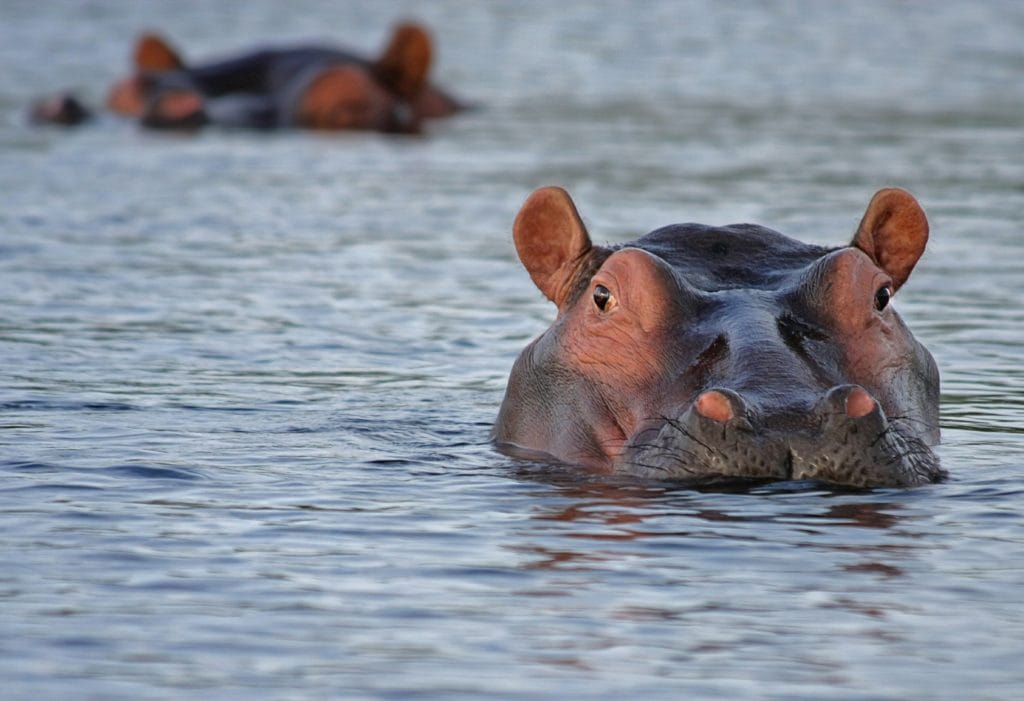
We come across a herd of zebras browsing on the long grass as we make our way back to the lodge. Did you know that no two zebra patterns are the same, and you can tell individual animals apart by their stripes? It’s like the spirals on the tips of your fingers or the patterns on the iris of your eye. Each one of us is so unique and so precious, when you think about it. One of them lifts its head up, lets out a snort of alarm, and then all of a sudden all of them are running away at once. Oh dear- we must have got too close. But isn’t it fascinating to watch them move? Look at the way their stripes move and blend together as they gallop away.
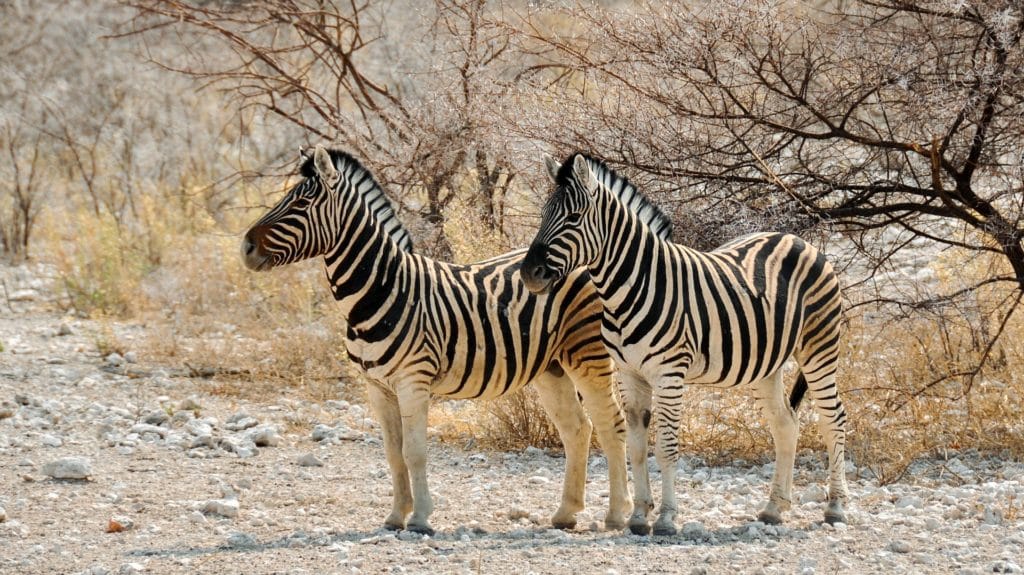
Well, here we are, back at the lodge where you’ll be staying tonight. By now your stomach must be rumbling – we’ve been out for a couple of hours, and it’s definitely getting towards breakfast time. I heard that Chef Pascal is making pancakes. Go ahead and enjoy it– you’ve earned it. Hopefully see you back here next time, when we’ll be seeing more beautiful and wondrous sights together.

